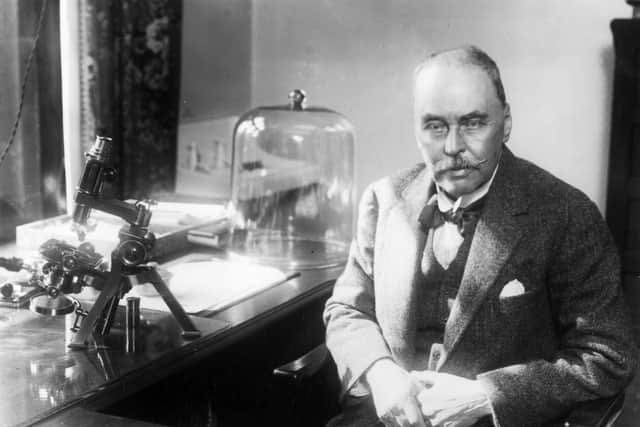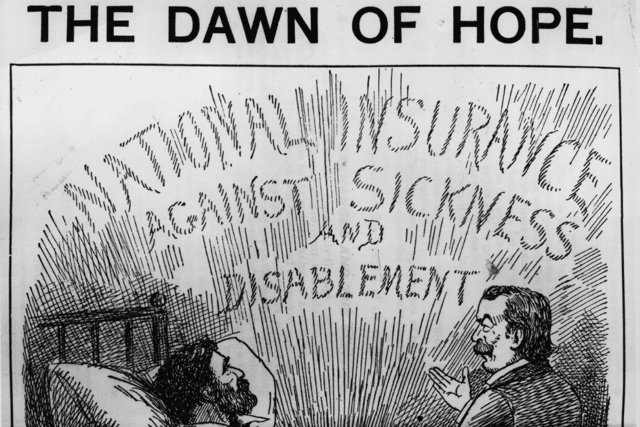The NHS at 75; what Britain was like before the development of the National Health Service?
and live on Freeview channel 276
The NHS turns 75 today and despite the complaints about waiting lists and the often rumoured talk about privatisation, ask a lot of tourists who have to pay for their healthcare what they think about it and most of the time the response is overwhelmingly positive. For as much as we gripe about the system, it's still here - albeit at times operating at an incredibly slow pace.
Which is a far cry from what the United Kingdom looked like long before the advent of a public healthcare system. Back then, mortality rates fluctuated between those who could afford healthcare and those who could not; limited healthcare resources through a lack of investment and socioeconomic inequities meant that for the rich, healthcare was accessible and yet for the poor, well it was a roll of the dice at times in the 19th century.
Advertisement
Hide AdAdvertisement
Hide AdEvidently, the inequity was something that the UK Government at that point in history thought was a very big issue, so before creating the NHS, a number of other laws and voluntary acts helped stem the issue of healthcare in the country. One of which, created in 1834, looking to tackle the poor not receiving adequate healthcare - The Poor Law.
The Poor Law Amendment Act of 1834 established a new system for providing relief to the poor and set out the responsibilities of local areas in assisting those in need. It introduced workhouses as a means of support, where impoverished individuals and families could receive basic provisions such as food, clothing and healthcare, typically in exchange for manual labour.
However, workhouse conditions were often harsh and families were frequently separated, leading to this idea to address the inequities of healthcare facing criticism for its inadequate support, becoming the subject of reform movements aiming to improve the living conditions and healthcare for those in poverty.
The advancement of voluntary hospitals


Though voluntary hospitals were established in the 18th century, it was their advancement in the 19th century that looked to aid in the poor healthcare standards in the United Kingdom. Many cities and towns established their own voluntary hospitals during this period, including St. Thomas' Hospital in London (established in 1862) and Manchester Royal Infirmary, which was initially set up in 1752, but reestablished as a voluntary hospital in 1830.
Advertisement
Hide AdAdvertisement
Hide AdSpecialising in specific medical areas and catering to particular patient groups, such as those with tuberculosis or children in need of care, these hospitals aimed to provide accessible medical services, offering treatment regardless of patients' ability to pay, although nominal fees might have been charged.
Voluntary hospitals relied on the commitment of volunteer doctors, nurses, and healthcare professionals who generously shared their expertise and time and these institutions varied in availability and scope across different regions, with major cities often hosting multiple voluntary hospitals, while smaller towns had fewer options or alternative healthcare provisions.
Collaboration and networking were essential aspects of voluntary hospitals, as they formed associations and alliances to share resources, knowledge, and best practices. These partnerships enhanced healthcare standards and coordination within the voluntary sector. However, despite their valuable contributions, voluntary hospitals faced challenges related to funding sustainability, capacity limitations, and uneven distribution of services.
Their operations depended heavily on public donations, which could be inconsistent, and not all individuals in need had equal access to their services.
Advertisement
Hide AdAdvertisement
Hide AdThe creation of National Insurance in 1911


That thing that we pay into each month from our wages, that we wonder why we pay it at all? Yeah, that was to help with healthcare pre-NHS, which our National Insurance contributions continue to do so to this day (with intermittent results, pending on your opinion of the NHS lately.)
National Insurance was at that time a government scheme aimed at providing workers with some level of protection against the risk of falling ill and being unable to work. Through National Insurance contributions, workers became eligible to see approved doctors and receive treatment for certain conditions, such as tuberculosis.
However, National Insurance coverage only extended to those who paid into the scheme, leaving their family members without coverage, and primarily focused on providing limited coverage for workers and addressing specific conditions rather than offering comprehensive healthcare services.
While National Insurance attempted to address some healthcare needs, it fell short in terms of ensuring equitable access to healthcare for all individuals and the limitations of National Insurance at this stage led to the release of “The Beveridge Report.”
Advertisement
Hide AdAdvertisement
Hide AdWhat was The Beveridge Report?


The Beveridge Report, officially titled "Social Insurance and Allied Services," was published in 1942 by Sir William Beveridge. It played a pivotal role in shaping the vision for the post-World War II welfare state in the United Kingdom, including the establishment of the National Health Service (NHS).
The report identified "five giants" that a strong welfare state could tackle: Want, Disease, Squalor, Ignorance, and Idleness. Beveridge envisioned a comprehensive system of social welfare that would provide a safety net for all citizens.
The report highlighted the need for a unified and accessible health service that would ensure equal access to healthcare services regardless of an individual's financial circumstances as it argued that health services should be provided free at the point of use, funded through general taxation rather than individual payments.
Beveridge recommended the creation of a National Health Service that would provide preventive, curative, and rehabilitative services for all citizens. The proposed service would be publicly funded and managed, with healthcare professionals employed by the state. The ideas presented in the Beveridge Report gained significant support from the public and politicians alike, leading to the inclusion of a National Health Service in the post-war reforms.
Advertisement
Hide AdAdvertisement
Hide AdThe report, and the use of National Insurance, led to the creation of the National Health Service in 1948 under the “National Health Service Act”, marking a revolutionary change in healthcare provision in the UK that we still have to this day, and celebrate its 75th anniversary, warts and all.
Comment Guidelines
National World encourages reader discussion on our stories. User feedback, insights and back-and-forth exchanges add a rich layer of context to reporting. Please review our Community Guidelines before commenting.
